Pattern Classifications
While taniko patterns do not usually have specific names there have been several attempts over the last 100 years to classify taniko designs based on the motifs and shapes used. The classifications listed below are outlined by Hirini Moko Mead in his book "Te Whatu Taniko" (see book list). He modified, i.e. extended, Sir Peter Buck's 1911 classification system ***(see bottom of page) from three classes of taniko patterns to seven.
Interestingly, while more mature, traditional weavers might weave designs that stay within one classification, younger, modern day weavers have been blurring together two or more of the classifications. Most often seen over the last 40 or 50 years, in what is known as the "modern period", has been a combination of the Class 3 Patikitiki and Class 7 representational designs. This combination is also now occasionally seen in taniko panels on some kakahu as well. More recently it has been shown that some weavers are quite adventurously combining Class 2 Aronui and Class 3 Patikitiki designs in small items like belts, etc with intriguing results. Furthermore, on items such as pari (costume bodices) a combination of Class 3 Patikitiki and Class 5 designs can often be seen. A large centre diamond design, which may also include the insignia of a school or an organized group, is usually surrounded by Class 5 patterning that is often used to extend the central motif across the width of the pari.
In the 21st century, stunningly beautiful kakahu are being created that might combine elements from several different cloak classes but are widely and generally known as korowai (one of the recognised traditional classifications of cloaks). It is with the same spirit of creativity that some weavers are combining elements from several different classes of taniko patterns. Fresh new ideas that not only honour traditional designs also go beyond the definitions of just one classification, stretching and continuing the evolution of the weaving arts.
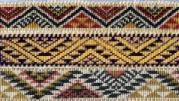

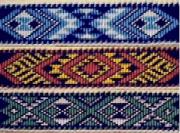
Aramoana and Tukemata
Aronui/Aonui
Patikitiki
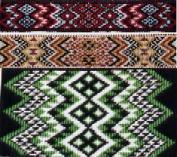

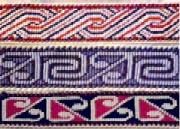
Waharua or Whakarua Kopito
Patterns with horizontal and vertical lines
(lower) "poutama" based on a kete whakairo pattern, also called "stairway to heaven"
Kowhaiwhai
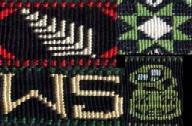
Representational